Exhibition subunit: Mycenaean Perfumes
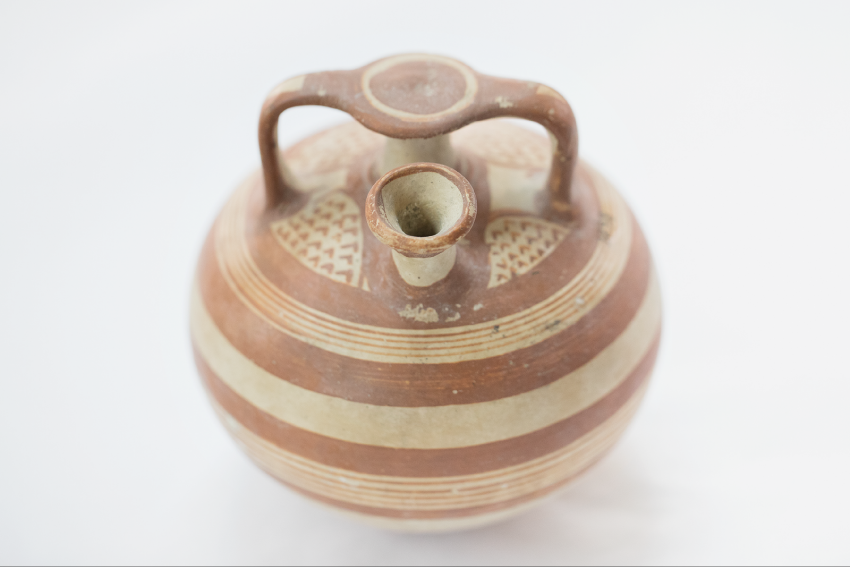
Stirrup jar. From Markopoulo, Attica. 13th c. BC. Stirrup jars have been unearthed throughout the Eastern Mediterranean, demonstrating the commercial value of the Mycenaean perfumed oils.

Linear B Tablet. From the Mycenaean palace at Pylos, 13th c. BC Perfume maker Thyestes receives among other substances some coriander and cyperus for the preparation of perfumed unguents. The perfume maker is mentioned in the tablets of Linear B as the man who boils the unguents, because boiling seems to have been the main procedure for perfume making.

Linear B Tablet. From the Mycenaean palace at Pylos, 13th c. BC Perfume maker Kokalos delivers to his colleague Eumedes 38 large commercial stirrup jars with 518.4 litres of perfumed oils. Perfume oils and unguents had cosmetic, pharmaceutical and possibly ceremonial uses.
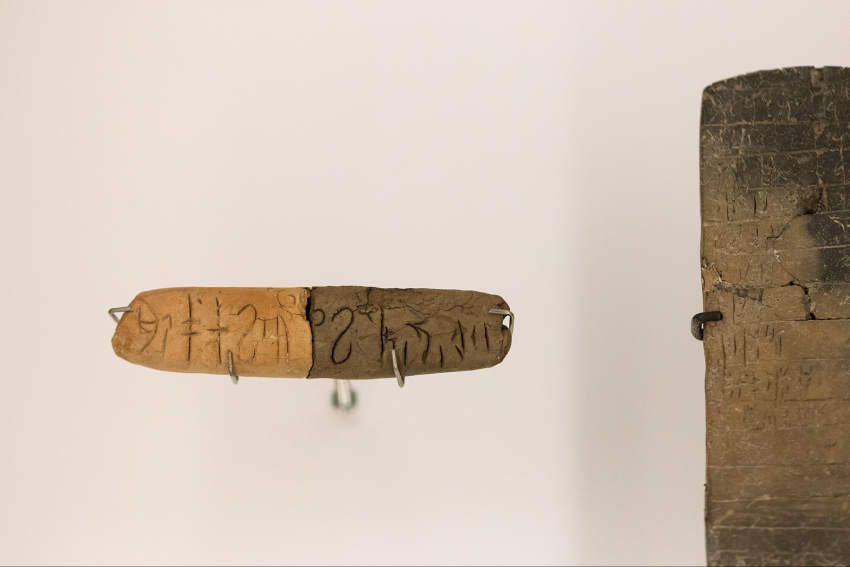
Linear B tablet. From the Mycenaean palace at Pylos. 13th c.BC The tablet records stored oil, perfumed with cyperus and rose petals.
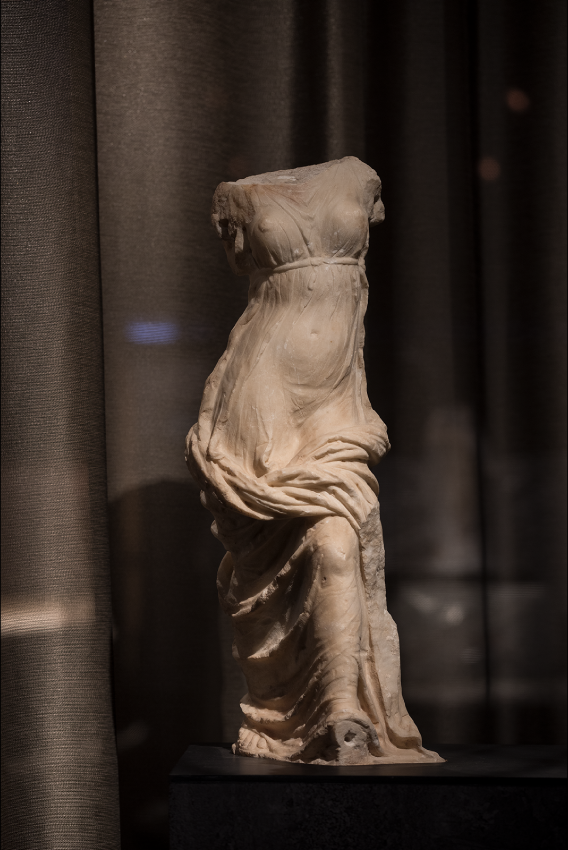
Statuette of Aphrodite. From Thision. 1st c. BC.
Height 0.64 m.
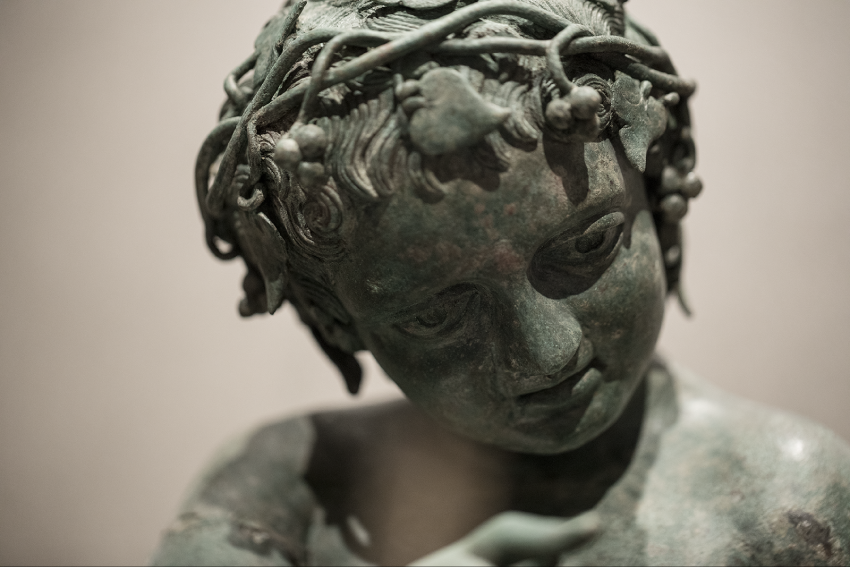
Bronze statuette of winged Eros. From Athens (part of the “Ambelokipi Hoard”). 1st c. BC. – 1st c. AD.
Work influenced by a creation of the 3rd-2nd c. BC
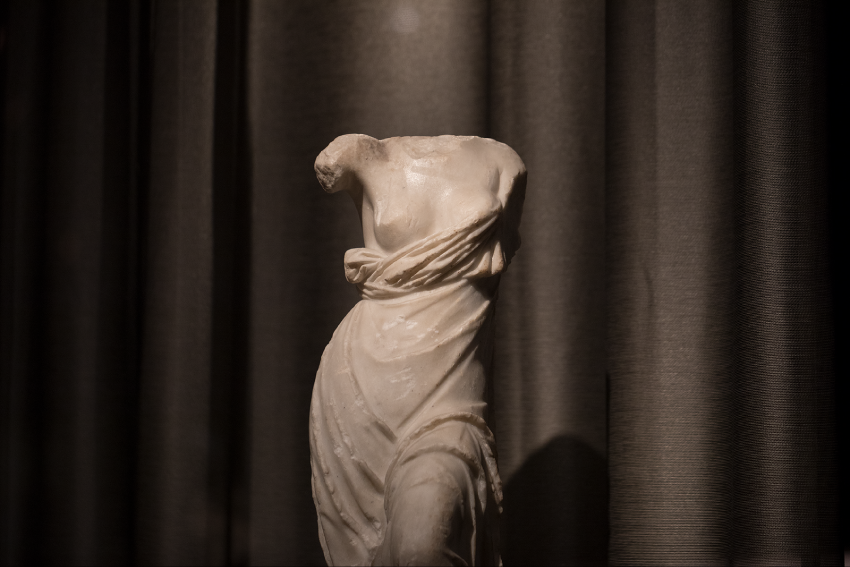
Statuette of Aphrodite. From Argos. 1st c. BC.
Height 0.70 m.
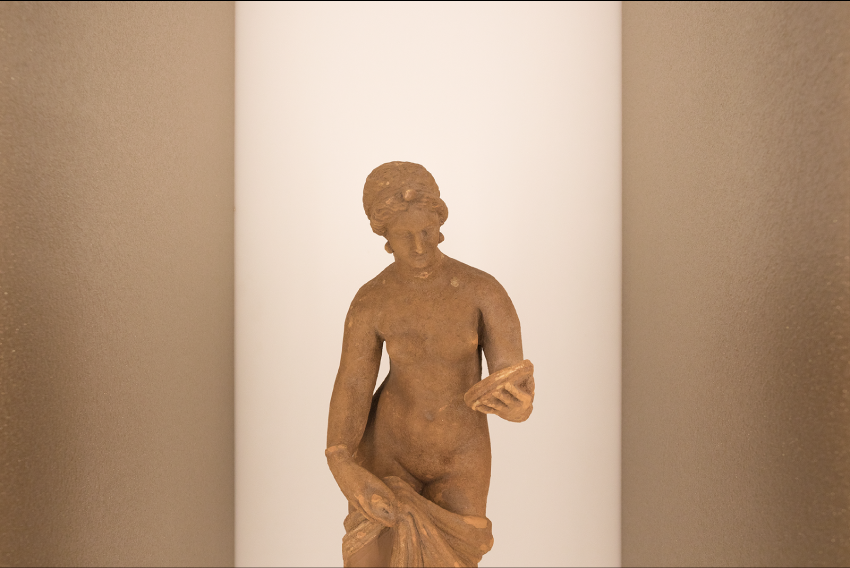
Clay figurine of Aphrodite holding a mirror. From Laconia (Gerakas, Monemvasia). 2nd - 1st c. BC’
The goddess of Love is reflected in a folding mirror. She is almost nude, apart from the himation that she holds loosely around the thighs, the hair cloth which covers her well-combed hair, and her jewellery (necklace, armlets and earrings).
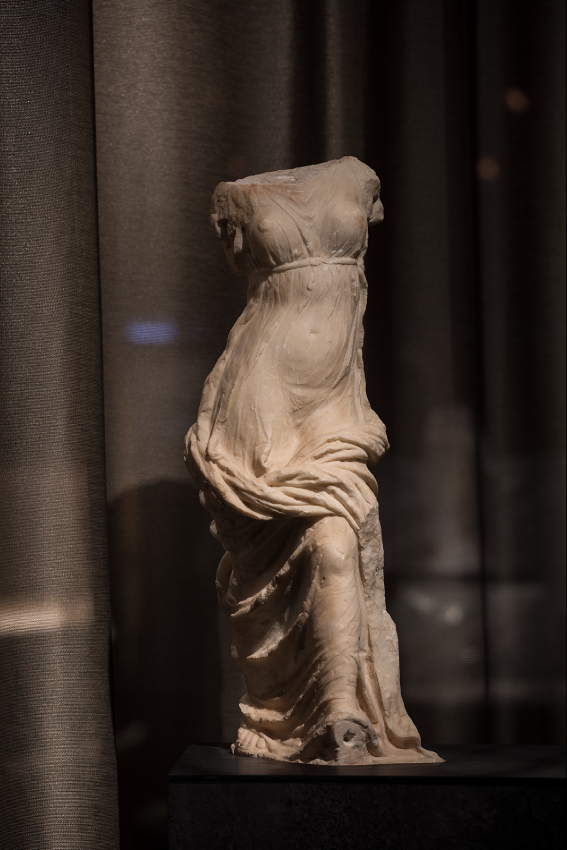
Clay figurine of Aphrodite. Myrina (Aeolis, Turkey). I. Misthou collection. 2nd - 1st c. BC.



